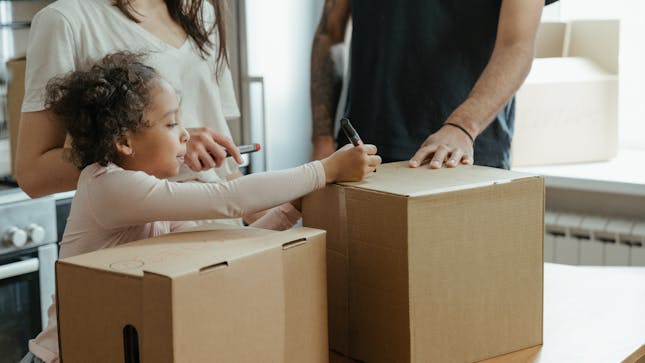Moving home is exciting, but let’s be honest—it can also be a bit of a whirlwind. Between packing, paperwork, and saying goodbye to your old place, there’s a lot to juggle. To make sure everything goes smoothly, here are 10 essential steps you should take to avoid last-minute surprises.
1. Hire Professional Movers
This should be your first priority. Professional house movers Singapore don’t just take the heavy lifting off your plate; they bring expertise to the table. From handling fragile items to navigating narrow hallways, they know how to get the job done safely and efficiently. Make sure to research local companies, compare quotes, and check reviews. Don’t leave it until the last minute either—reputable movers can get booked up weeks in advance. Think of it as investing in peace of mind.
If you’re also relocating your vehicle, arranging reliable transport with experienced Car Transporters like https://www.shiply.com/
2. Declutter Before You Pack
Do you really need to take that old toaster that barely works? Moving is the perfect opportunity to get rid of things you no longer need. Start room by room, sorting items into categories: keep, donate, recycle, or toss. Not only will this save space in your moving boxes, but it also means less to unpack at your new home. Plus, charities will appreciate your unwanted goods, and you’ll feel lighter knowing you’re starting fresh with just the essentials.
3. Create a Moving Inventory
Have you ever packed something away only to realise later that you’ve forgotten where it went? Avoid this by making a detailed inventory of everything you’re taking with you. It doesn’t need to be overly complicated—just a list of items by room will do. You can also label boxes with numbers and match them to your inventory for easy unpacking. Trust me, this small step will save you loads of stress when you’re hunting for that one specific item in a sea of boxes.
4. Notify Key Services and Utilities
No one wants to move into their new home only to find out there’s no electricity or Wi-Fi. Make a list of all the utilities and services you need to update, including water, gas, electricity, internet, and your council tax. It’s also worth forwarding your post through your local postal service to catch any mail sent to your old address. Don’t forget subscriptions, bank accounts, and even your employer—they’ll all need your new details.
5. Pack an Essentials Box
Picture this: it’s your first night in your new home, you’re exhausted, and you can’t find the kettle or your toothbrush. An essentials box solves this problem. Fill it with everything you’ll need for the first 24–48 hours: toiletries, basic kitchen items, a change of clothes, chargers, and important documents. Keep it separate from the rest of your belongings so it’s easy to grab when you arrive.
Read Also: The Benefits of Choosing Backloading Removals for Long-Distance Moves
6. Measure Your New Space
Have you checked whether your sofa will fit through the front door of your new place? Before moving day, take the time to measure doorways, staircases, and rooms in your new home. Compare these measurements with your furniture to ensure everything will fit. If you spot potential issues, plan ahead—removing doors or hiring specialised movers can solve most problems.
7. Plan Your Packing Strategy
Packing can feel like a monumental task, but a strategy makes all the difference. Start with items you don’t use often, like seasonal decorations or books, and work your way towards everyday essentials. Use quality packing materials—sturdy boxes, bubble wrap, and packing tape are non-negotiable. Label every box with its contents and the room it belongs to. Pro tip: colour-coded labels make unpacking even easier.
8. Double-Check Your Moving Day Logistics
Moving day is hectic, so make sure you’ve covered the logistics well in advance. Confirm timings with your moving company and ensure there’s adequate parking at both locations. If you’re moving from a flat, check if you need to book a lift or loading bay. Have a plan for pets and kids—they’ll need a safe and calm space away from the chaos. Being organised here prevents unnecessary stress on the day.
9. Take Photos of Your Old and New Homes
Before leaving your current home, take photos of every room, including any existing damage. This is especially important if you’re leaving a rental property—it can serve as evidence to avoid disputes over your deposit. Do the same at your new place before moving in, particularly if it’s a rental, to document the condition of the property. It’s a simple precaution that could save you money and hassle later.
10. Schedule Time for Cleaning
A clean home is a happy home, right? Plan to clean both your old and new places. For your old home, this might mean a deep clean to ensure you leave it in good condition, especially if you’re renting. For the new place, even if it seems clean, it’s worth giving it a thorough once-over before your belongings arrive. You’ll thank yourself later when everything feels fresh and ready to go.
Ready for Your New Adventure?
Moving doesn’t have to be overwhelming. By taking these steps, you’re setting yourself up for a smooth and stress-free experience. Planning ahead, staying organised, and focusing on the essentials will make all the difference. So, as you settle into your new home, you can focus on enjoying the exciting new chapter ahead instead of worrying about what you might have missed.





